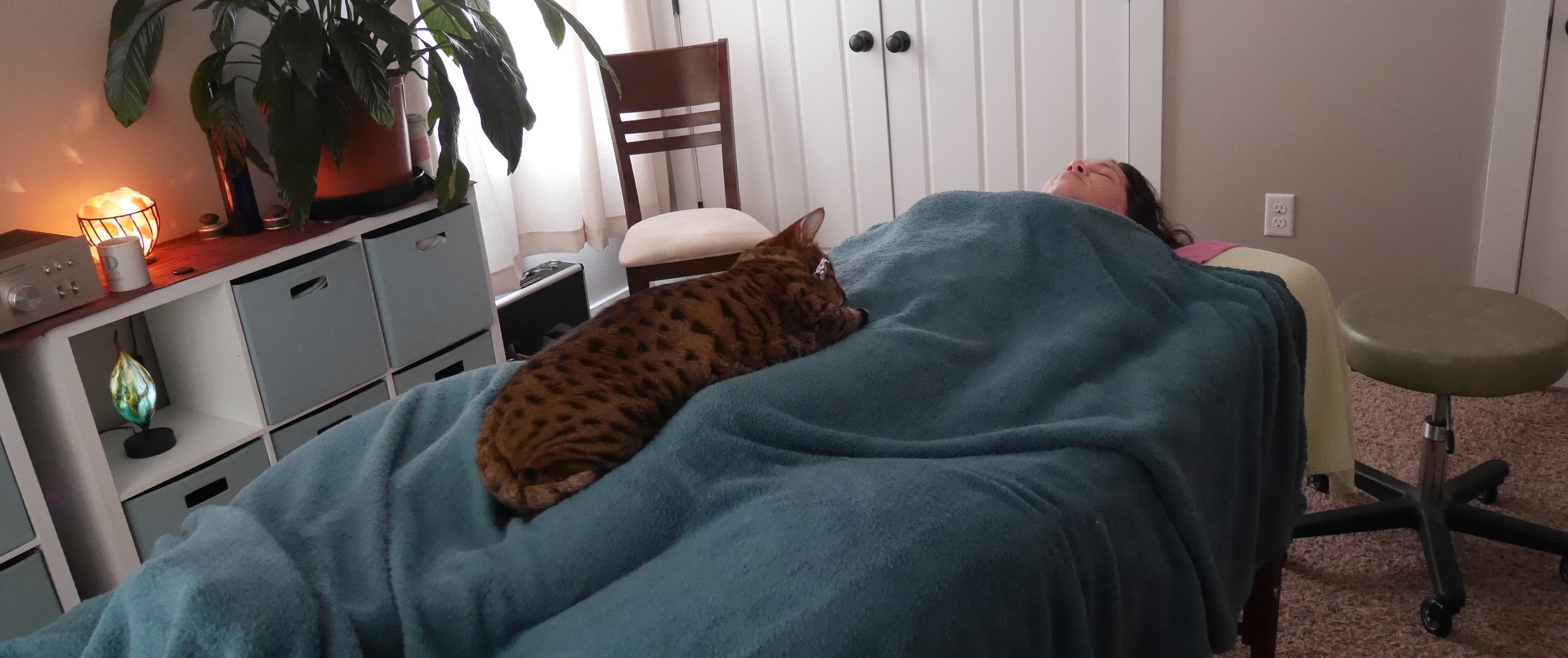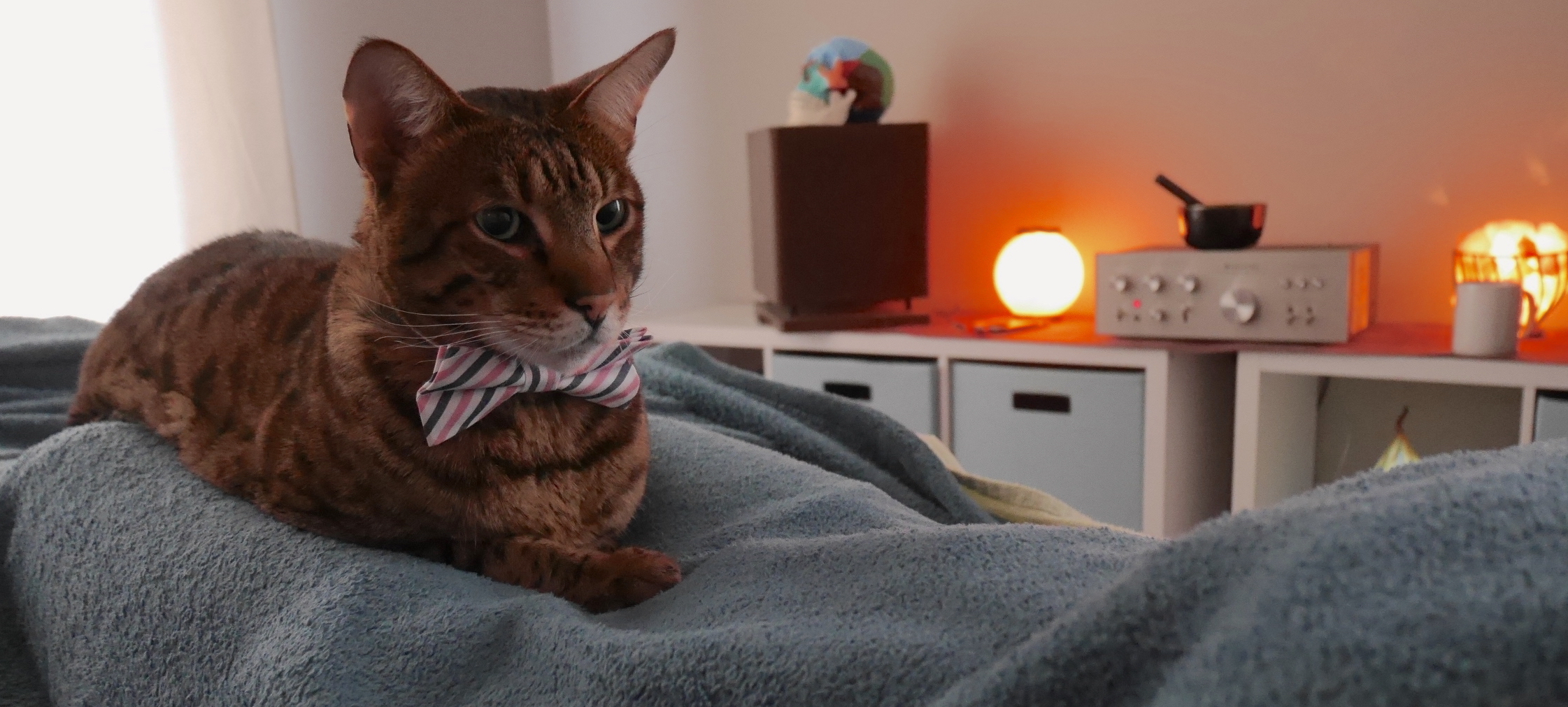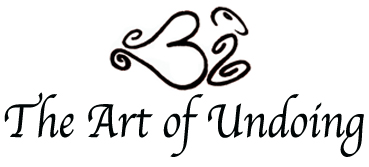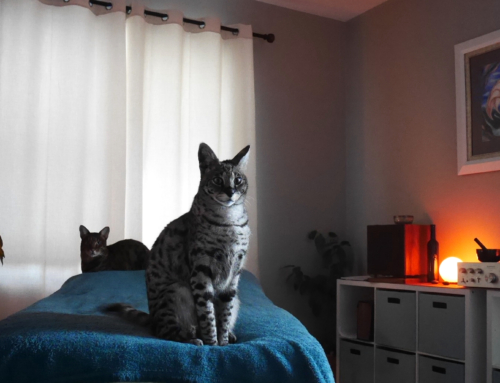Cat owners are 40% less likely to die from a heart attack, according to a National Health and Nutrition Examination Study. They are also 30% less likely to die from any other kind of cardiovascular disease such as heart failure, stroke or chronic heart disease.
How does a cat create such seemingly magical benefits to human health? The secret is in the simple and humble purr, a sound almost universally known and loved.
It may sound like a far fetched tale but there is strong science behind a cat’s purr has apparently miraculous benefits for human health. It’s largely the subsonic frequencies. Such tones are below the range of normal hearing and have been used by modern medicine for decades. They speed the healing of many ailments including broken bones, damaged tissue, joint disorders, heart problems and much more.
It has been found that all purring cats (domestic, Serval, Bobcats, Ocelots, Lynxes, Cougars and the Cheetah) purr at very similar frequencies despite their size. Each cat’s purr ranges from 20 to 150 Hertz. The Cheetah however, purrs at at 25, 50, 100, 125 and 150 Hertz exactly. These are considered to be the best healing frequencies with 25 and 50 Hertz being the best for bone.
Hertz (abbreviated as Hz) refers to the frequency of sound, it indicates cycles per second. A 60 Hertz sound will cycle 60 times per second, 120Hz cycles 120 times per second, etc. Since more cycles have to fit in the same time frame with a higher frequency the distance between the waves is shorter and the sound is higher to the ear. Low frequency sounds are much slower and lower. They have a very long wavelength and for this reason deep bass travels through things and over great distances while high pitched sounds tend to be easier to capture and do not travel as far. The human hearing range is about 50-20,000 Hertz, this means we cannot hear the full vocal range of a cat’s purr, but we can feel it.

Dr. Lee Bartel (Professor Emeritus of Music and Health and Music Education and at the University of Toronto) has been studying the healing potential of sound for decades. His research found that the 40 Hertz frequency appears to stimulate improved signaling and harmony in the brain. He has also found promising results for patients with Parkinson’s, Fibromyalgia and Alzheimer’s Disease.
A study by Naghdi et al (The Effect of Low-Frequency Sound Stimulation on Patients with Fibromyalgia: A clinical study, 2015) found an 81% improvement on the Fibromyalgia Impact Questionnaire, a 90% improvement on the Jenkin’s Sleep Scale, a 49% improvement on the Pain Disability Index. Medication was reduced in 74% of patients and halted completely for the remaining 26% while range of motion and muscle tone also increased significantly. He used 40 Hertz.
In 2017 Shengwei Zhao and Sun et al (Low-Frequency Vibration Treatment of Bone Marrow Stromal Cells Induces Bone Repair In Vivo) showed that frequencies of 25-50 Hertz, specifically 50 Hertz, triggered the differentiation of bone marrow stomal cells into osteoblasts which led to accelerated bone healing after injury. They also observed increased absorption of callus hematoma, increased proliferation of osteoblasts, greater production and symphony of collagen fibers and significantly higher levels of callus. All in all the study showed a marked improvement at all stages of bone cell growth and repair after injury.
While it has long been known that cats purr when they are happy it has also been found that they purr when stressed, injured, giving birth or nursing kittens. It takes large amounts of energy to vibrate the laryngeal muscles of their larynx to create the vibrations of a purr. Considering this it would not seem logical for cats to waste precious energy purring during time of injury unless it had some greater function than a simple expression of contentment or reassurance.
There have been numerous accounts of people with injury and illness who witnessed their cat sitting on the site of illness and purring loudly for days until a full recovery was made. In many cases the cat broke it’s normal routine to do this and went back to it’s usual habits once recovery was established. One might suggest that cats know when their humans are sick and know just what to do to help them heal.

One way that subsonic frequencies could have this affect, in osteopathic medicine specifically, is the vibration of silica in bones. Silica/quart has a piezo-electric effect meaning that when it is put under pressure it creates an electrical current. This can be seen if one hits a piece of quartz crystal with a hard object, a visible flash or spark can be seen. The electric lighters and push button ignition devices found on gas appliances also use this effect. Since the bone is full of silica it responds with a subtle piezo electric effect when under pressure and this Piezo-Electric effect stimulates the growth of new bone cells. This is why weight bearing exercise is recommended to avoid thinning bones in later years. It has been suggested that the subtle vibrations of low frequency sound causes oscillation in the bone cells thereby utilizing this effect. Overall little is known about exactly how a cat’s purr heals but it has been extensively shown that they do.
What is most interesting is that all the healing frequencies currently in use in the medical field are contained within a cat’s purr. So how can we benefit from this knowledge? Obviously having a cat as pet is a good way to begin, preferably an affectionate one. Due to a cat’s size its effects are localized so there is no perfect way, short of a pet Cheetah that likes full body hugs, to treat the whole body at once. Luckily there are technologies available that recreate a cats purr for therapeutic value. Typically these devices have isolated certain frequencies and apply them as a simple isolated tone.
At the Art Of Undoing we use a full vocal range recording of our own Savannah cats purring and play it back through high end audio equipment (a 1000W, 12” ported subwoofer with a 16-200 Hertz frequency response). This authentically recreates the experience of a kitten curled up in the mother cat’s belly as she purrs. The deep, soft, rumbling frequencies that fill the room and gently penetrate the clients body create an immediate sense of calm and wellbeing.
Clients report notably deeper relaxation than usual which greatly assists the effectiveness of Craniosacral Therapy aside from the myriad benefits of the healing frequencies themselves. This is included in session at no extra charge and is optional. For those who would rather spend their session listening to music or in silence just ask.
We also have our cats join clients in session. Aside from their reassuring presence, warmth, weight and playful character they also give localized purr treatments to wherever they choose to lay. Unfortunately, due to the inherent nature of cats, we cannot make any guarantees about which cats will join in session and where they will lay. We usually have at least one, Willy, who insists on joining every treatment. Even our few non cat-loving clients have formed a close bond with Willy after their first treatment with him. He’s just that adorable and good natured.








Leave A Comment
You must be logged in to post a comment.